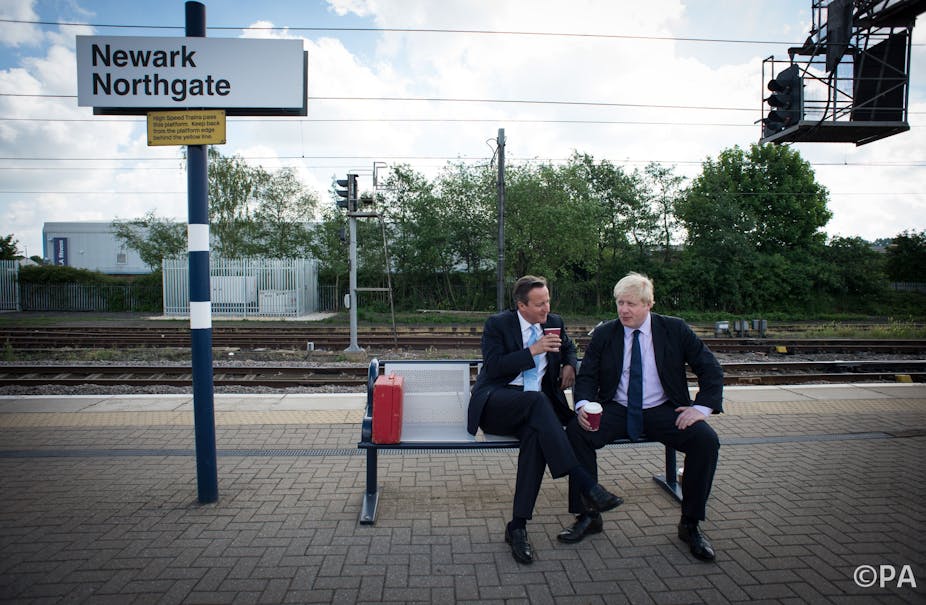With the political fallout from the local and European elections fresh in the memory, the electoral circus has moved on to Newark. At stake is the seat vacated by MP Patrick Mercer, who resigned over a lobbying scandal in April 2014.
The by-election’s outcome could have major political consequences for all the main parties. Will Ukip register their first parliamentary seat following its success at the recent local and European elections? Can the Conservatives win a by-election while in government for the first time since 1989 and halt the Ukip advance? Can Labour poll strongly to dispel the rumblings over Ed Miliband’s leadership? And could a lost deposit in Newark spell more Liberal Democrat in-fighting and add to the pressure on Nick Clegg to stand down?
Unsurprisingly, Newark has been a hub of pre-poll activity, with David Cameron visiting the constituency four times and party beasts from across the political spectrum descending on the Nottinghamshire constituency in droves as the scramble for votes intensifies.
By-elections are indeed special electoral occasions, but in such close contests, they reassert the importance of one much overlooked but significant aspect of British elections: the local constituency campaign.
All politics are local
Local parties play a pivotal role in the electoral process, actively identifying potential supporters and then ensuring on election day that they turn out to vote to maximise their chances of winning. Yet up until the mid-1980s, the local constituency campaign’s impact on electoral outcomes was largely dismissed as negligible.
They were dismissed even by the most esteemed British psephologist of them all, David Butler, who famously wrote that “If all constituency electioneering were abandoned, the national outcome would probably be little altered.”
But over the past 30 years, numerous academic studies have dispelled that observation – consistently finding that when a party campaigns more intensively than its opponents in a particular constituency, it receives a clear electoral payoff.
The nature of campaigning has also changed. The days when an MP drove around his/her constituency on polling day with a loudspeaker beckoning supporters to trudge to the polling stations to vote are largely (though not totally) gone. Generally speaking, all the main parties have become more sophisticated in their approach, focusing resources in key marginal seats where they believe the election will be won or lost.
To some extent, this depends on the electoral context; in 2010, for instance, Labour ran an extremely successful defensive campaign strategy in its safer seats, which undoubtedly limited the party’s losses.
They know where you live
Parties just don’t target areas within constituencies; they also use geo-demographic software to compile household and individual data, which they then combine with canvass records to tailor individual messages to targeted groups.
Increasingly, local campaigns have been bolstered by support from the national parties, with target voters canvassed from centralised call centres and then sent personalised literature. Whereas in the past local campaigns were essentially independent of the central campaign, many are now coordinated from the parties’ national and regional headquarters. Party campaigns in key target seats are therefore more and more joint efforts, with the local constituency parties still responsible for providing volunteers and the money needed to run their campaign activities such as printing posters and leaflets.
Local leaflets and direct mail (from outside the constituency) still remain a staple of party electioneering. And telephone canvassing has increased substantially over the past twenty years. Both have proven track records of mobilising voters – but research has also repeatedly shown that personal contact through doorstep canvassing are by some distance the most effective means of socialising and mobilising voters.
But the parties face a dilemma here. The steady decline in membership across all parties has meant their resources are continuously stretched, and campaigns are increasingly struggling to keep up the extensive personal contact which was at the core of local electioneering 20 or 30 years ago. The parties have adapted their tactics in response; the increasing use of non-party members as campaign volunteers is now evident across all parties while parties are encouraging core supporters to use the postal vote system, easing the pressure on constituency polling day operations, and allowing them to concentrate their mobilisation efforts on those voters who are more undecided.
And what about Newark? Rob Ford and Matthew Goodwin, the emerging authorities on Ukip’s recent advance, have poured cold water on hopes of a Ukip victory there, ranking it as the 248th most Ukip-friendly seat in the country. This seems to be borne out by recent Ashcroft polling in the constituency, which suggests a comfortable Conservative victory.
But by-elections are unpredictable. With generally lower turnout than at general elections, it is even more vital for parties to locate, secure and mobilise their core supporters. Because if the contest is at all close, a well-organised local campaign might well make the difference between winning and losing.

